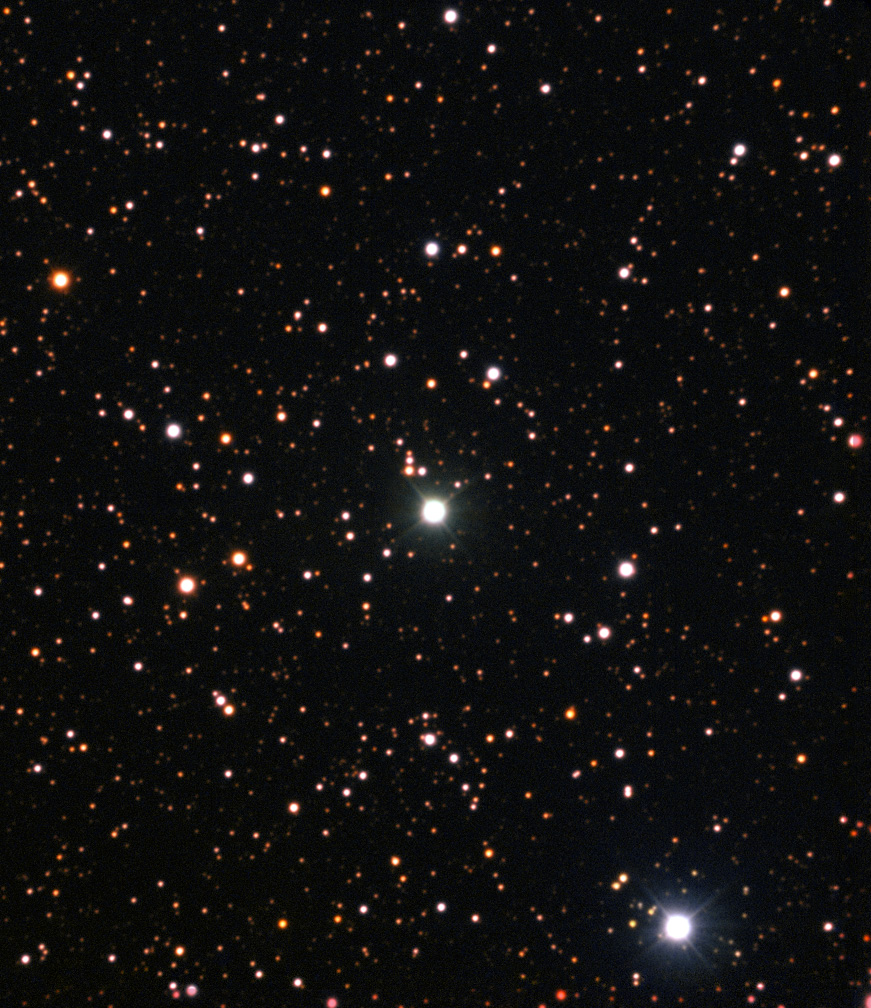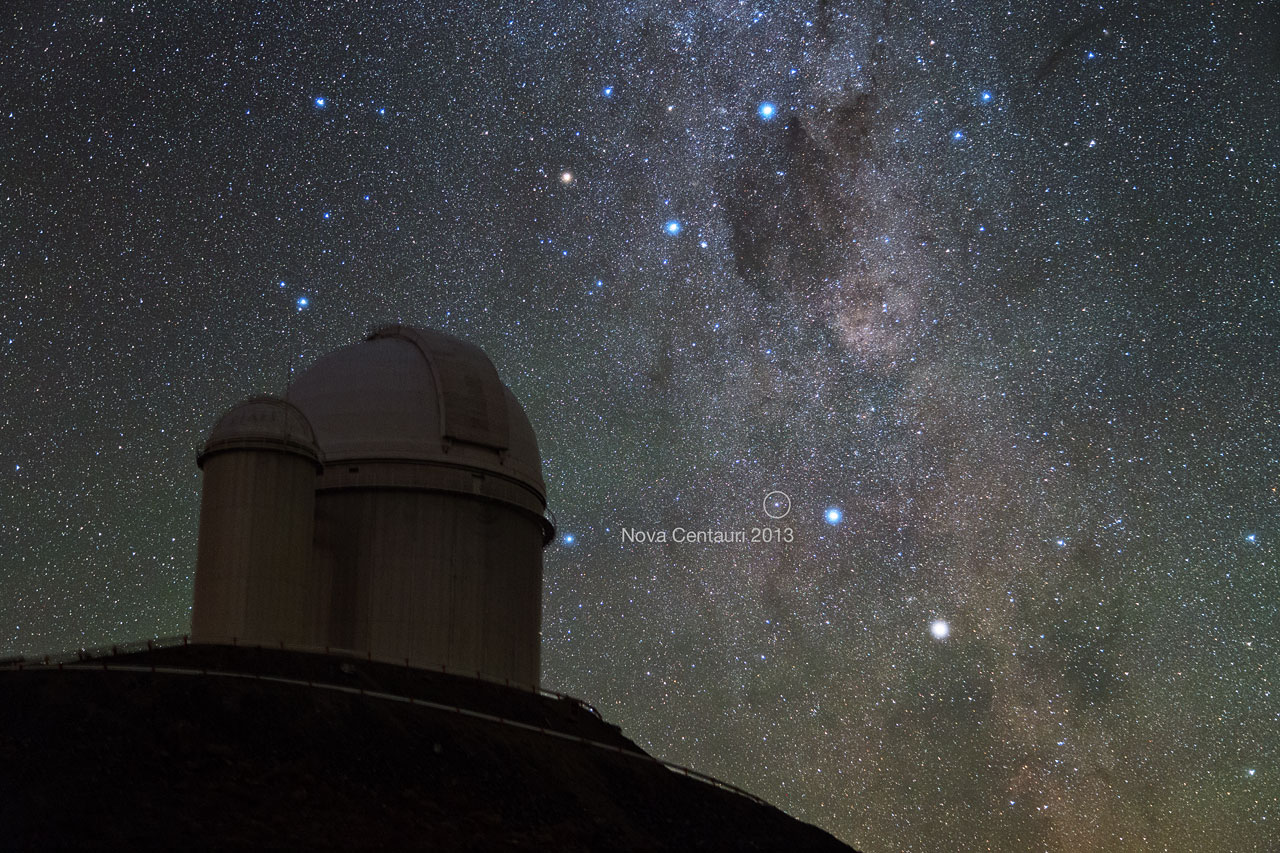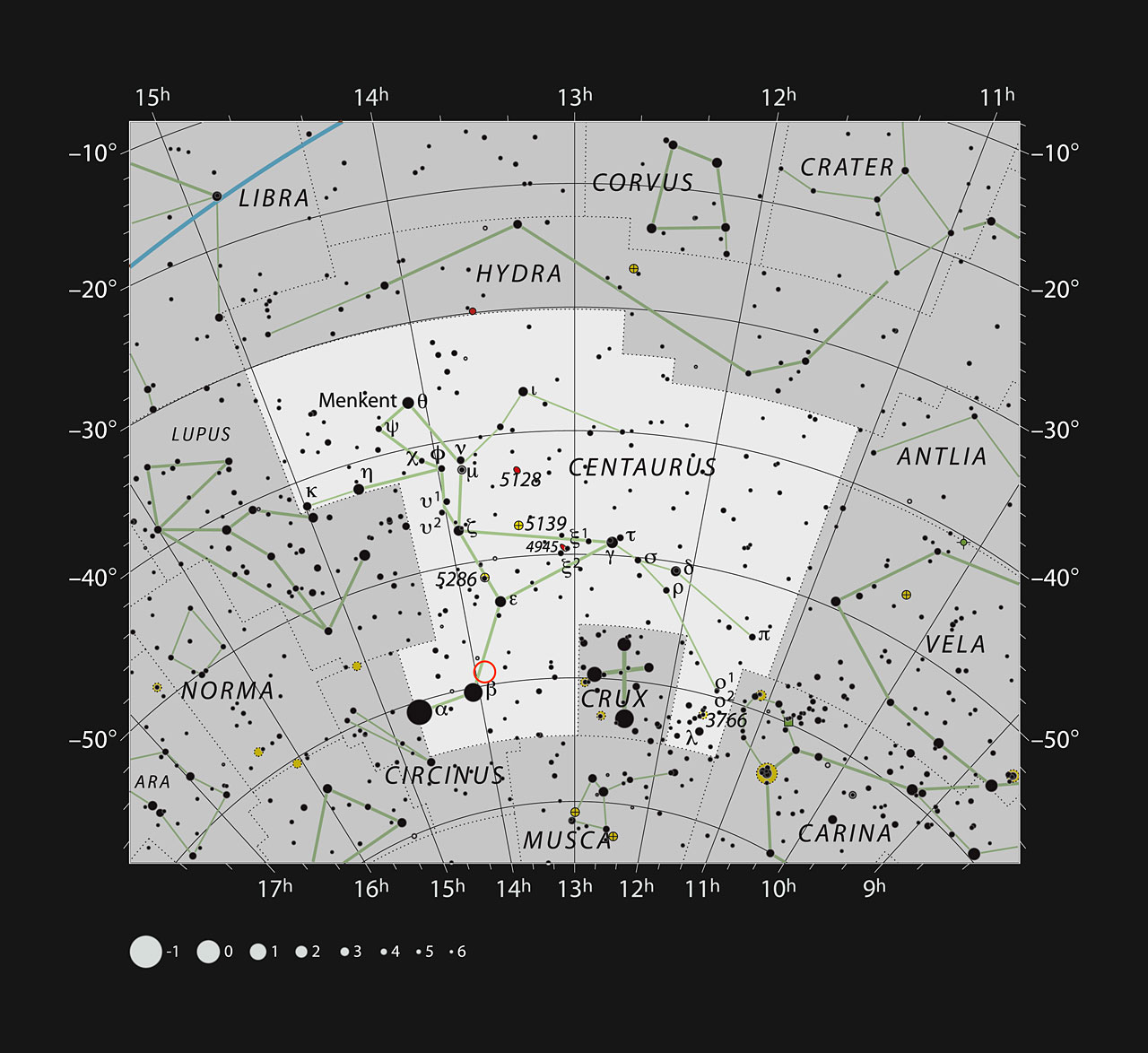Bang! Exploding Star Reveals Lithium Discovery

The brightest nova of the century blasted lithium into space at 1.2 million mph (2 million km/h), new research reveals, cracking a long-standing mystery about the chemical balance of the universe.
Nova Centauri 2013 materialized in the sky in December 2013, caused by a huge nuclear explosion on a white dwarf star. This formed a new point in the constellation Centaurus, visible to the naked eye. Now, new measurements from the European Southern Observatory's (ESO) La Silla facility in Chile reveal that the explosion is ejecting the element lithium, the first time that element has been seen in a nova system. This may help explain the topsy-turvy lithium distribution within stars, according to ESO officials.
"Understanding the amounts of lithium observed in stars around us today in the universe has given astronomers headaches," ESO officials wrote in a statement. "Older stars have less lithium than expected, and some younger ones up to 10 times more." [Video: Lithium Found in Nova Blast] The amount of lithium ejected from Nova Centauri is small, less than 1 billionth the mass of Earth's sun. But the element's presence in the nova supports a hypothesis in astronomy that a particular class of younger stars could have been built partially from lithium shot out of older stars. This would explain the younger bodies' higher levels of lithium.

"It is a very important step forward," study co-author Massimo Della Valle, from INAF–Osservatorio Astronomico di Capodimonte, Naples, and ICRANet, Pescara, Italy, said in the statement. "If we imagine the history of the chemical evolution of the Milky Way as a big jigsaw, then lithium from novae was one of the most important and puzzling missing pieces. In addition, any model of the Big Bang can be questioned until the lithium conundrum is understood."Della Valle and another co-author, Luca Pasquini, an astronomer at University of Bologna in Italy, have been searching for traces of lithium in novas for over 25 years, according to the statement.

The lead scientist, Luca Izzo from Sapienza University of Rome and ICRANet, is excited too, although newer to the chase, he said in the statement: "It is very exciting to find something that was predicted before I was born and then first observed on my birthday in 2013!"
Get the Space.com Newsletter
Breaking space news, the latest updates on rocket launches, skywatching events and more!
The research is detailed in the July 20 edition of The Astrophysical Journal Letters.
Email Sarah Lewin at slewin@space.com or follow her @SarahExplains. Follow us @Spacedotcom, Facebook and Google+. Original article on Space.com.
Join our Space Forums to keep talking space on the latest missions, night sky and more! And if you have a news tip, correction or comment, let us know at: community@space.com.

Sarah Lewin started writing for Space.com in June of 2015 as a Staff Writer and became Associate Editor in 2019 . Her work has been featured by Scientific American, IEEE Spectrum, Quanta Magazine, Wired, The Scientist, Science Friday and WGBH's Inside NOVA. Sarah has an MA from NYU's Science, Health and Environmental Reporting Program and an AB in mathematics from Brown University. When not writing, reading or thinking about space, Sarah enjoys musical theatre and mathematical papercraft. She is currently Assistant News Editor at Scientific American. You can follow her on Twitter @SarahExplains.









